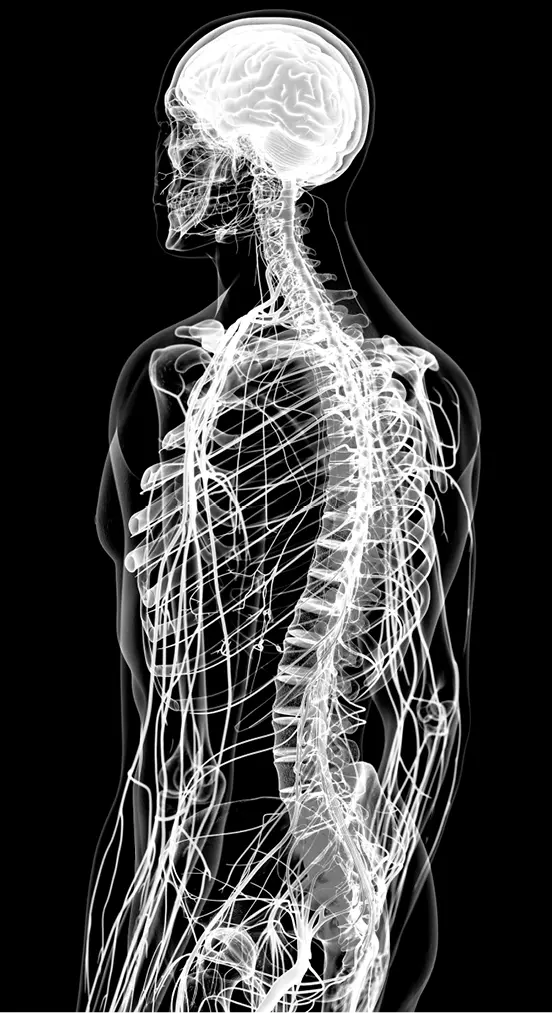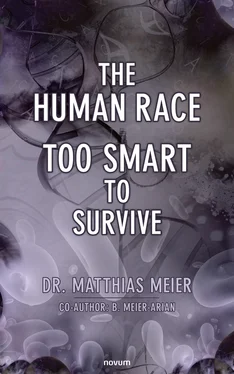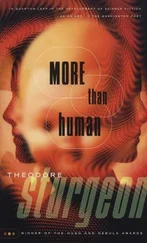However, acquiring at least a rough understanding of various physiological processes and treatment options gives patients a way to emancipate themselves from dependence on the health care system to some extent and take control of their own health.
This book is intended to provide the reader with a thorough (albeit not complete) insight into external and internal influences that can lead to illness, and to show ways to positively influence them. The background of the mode of action from the central nervous system and clinically verified nutritional therapy will be highlighted in order to show how the right approach can stimulate the body to heal, regardless of the disease. It may surprise some how quickly and effectively several chronic diseases can at least be improved with this approach. The word “holistic” has become overused. Holistic means understanding and treating the patient’s emotional, chemical as well as physical stress. Those who fail to make an effort to do so may not call themselves holistic. Reducing these three forms of stress inevitably leads to increasing patient recovery. Day after day, people with chronic pain, limited mobility, cardiac arrhythmia with feelings of anxiety and significantly reduced quality of life hope that medication and surgery can take away their illness. However, a symptom-oriented approach to treatment is generally used in these cases, and thus the cause remains untouched. A different approach is needed here, as treating only the symptoms and ignoring the cause will not bring any benefit in the long run. No matter how cleverly thought out the drugs and how sophisticated the surgical techniques, they neither increase our life expectancy nor make us healthier.
Do you suffer from knee pain because you haven’t had enough surgery? Do you have high blood pressure or get headaches from taking too little medication? Is the cause of cancer a lack of chemotherapy and radiation? The answer is a resounding: NO! In this day and age, we rely on scientific studies to show us new ways to reclaim our health. This was especially true during the 2019–2021 “Corona Pandemic”. Scientific studies were looked to again and again to justify the actions taken. But how far can our trust in science go when the editor-in-chief of one of the most important medical journals in the world, “The Lancet,” announced in 2015 that by now only half of the published studies, if any, are credible. The rest are manipulated, falsified, influenced by interest groups or simply invented1. This fact should make you think, because this “science” is the basis for decisions that impact all our lives.
Read on and be guided into the wonderful world of the human body. Learn about the fascinating connections, the healing power of the central nervous system and the power of emotions. Discover environmental influences and how you can positively influence them. No one should have to engrave “I told you I was sick!” on their tombstone.
1https://www.ncbi.nlm.nih.gov/pmc/articles/PMC4572812/
Chapter 2 - The Central Nervous System
It should be a well known fact that our central nervous system consists of the brain and spinal cord, which are located in our skull and spine respectively. With its estimated 80 to 85 billion cells, the brain controls all metabolic processes of the human body, be it joint metabolism, heartbeat, digestion, hormone secretion, etc. The entire process is so incredibly complex that it is questionable whether we will ever understand the details in their entirety. However, it is sufficient in this case to know that the brain is our central computer that has control over our organs, joints, muscles, hormonal glands, posture, and the processing of our emotions. It communicates with the respective end organ via the spinal cord and the nerve roots branching from it between the vertebrae. This communication goes in both directions, so that the brain is also constantly informed about the metabolic state of every area. This connection is essential for health, which seems logical, but plays practically no role in the treatment of diseases. But more about that later.

Source: Adobe Stock (SciePro)
The central nervous system is built up of different components: the brain, the spinal cord and the autonomic nervous system.
The brain is our central command, the all supervising and omnipotent center. It is from here that all signals are transmitted to the respective areas of the body, and it is here that all feedback from these regions is received. The positions of each muscle and every joint are immediately registered and calculated to the degree precicely and, if necessary, counteracted to ensure the most upright posture and specific coordination. The release of each hormone is precise down to the microgram and is increased or decreased depending on the amount of stress. All sensory inputs are transmitted at lightning speed and processed both logically and emotionally. Memories and feelings arise, and the vegetative nervous system reacts with increased heartbeat, altered digestion, adjustment of breathing and much more. At the “temporal lobe” of the brain, there is a large furrow that divides the anterior and posterior parts of the lobe. The anterior part (precentral gyrus) is divided in its cell portions according to body region and is used for motor control. Motor signals are sent from here and terminate directly at the muscle, which executes the corresponding commands. Behind the furrow is the postcentral gyrus, which is also divided by body region and is responsible for sensitivity, as well as serving as the target of signals sent from the periphery to the center of the brain.
The right and left hemispheres of the brain are connected by a bridge of sorts so that information can be exchanged. The diencephalon (interbrain) contains the thalamus and hypothalamus, with the former being important for consciousness and transmitting sensory input, and the latter being a hormone production site, as well as the center for circulation, breathing, temperature regulation, and sleep-wake rhythm. The midbrain processes and transmits a great deal of information related to movement. Eye movements are controlled from here. And Substantia nigra (black substance) ensures the release of dopamine, which is stimulated by movement and whose function is impaired in Parkinson’s patients, for example. The mid-brain is already part of the brain stem, which phylogenetically represents a very old part of the brain and, unlike the cerebrum, has hardly changed during the course of human evolution.
The spinal cord acts as an extension of the brain stem and is essentially the highway for nerve signals into the body, carrying all signals from the brain everywhere (except for the cranial nerves themselves, which control the eyes, ears, inner ear, tongue and throat, face, etc.). Some nerve signals reach speeds of up to 120 meters per second, while other nerves are much slower. (You know what this is like: You stub your toe on the edge of the bed, drop something on it or jam it in the garage door. You know what’s about to happen, but the pain is still 1 to 2 seconds away. The nerves that send this signal transmit it at a speed of only 1 to 2 meters/second, hence the delayed onset of pain.) The speed of conduction depends on the type of nerve involved. Some are surrounded by a nerve sheath that has small constrictions. The electrical signals then jump from ring to ring, reaching the highest speeds. Nerve sheaths are primarily made of cholesterol and their structure is damaged in patients with the disease “multiple sclerosis”. Small nerve roots are released by the spinal cord between the vertebrae, which branch off to the right and left, supplying individual areas of the body with signals and transporting them back again.
Читать дальше













